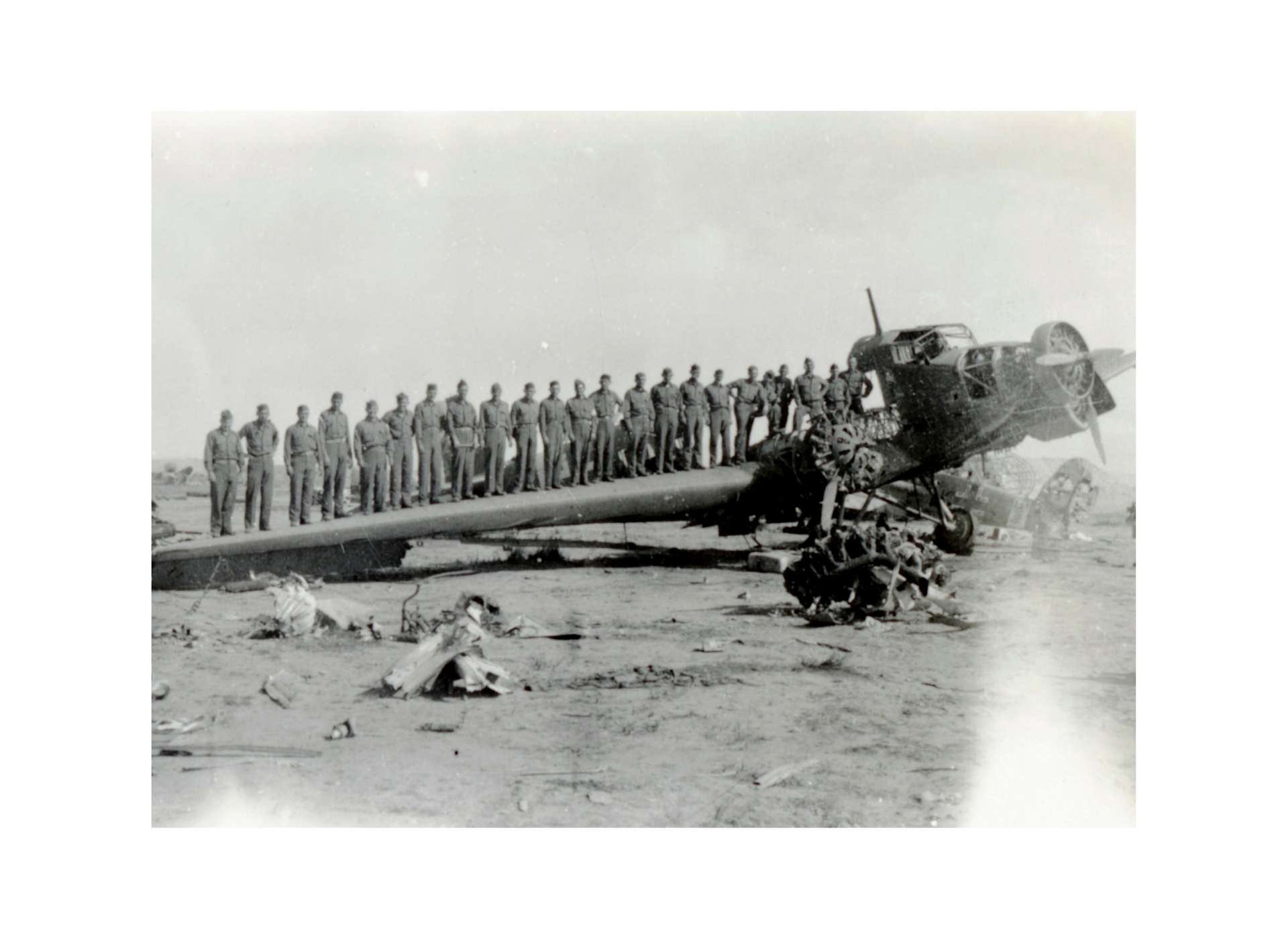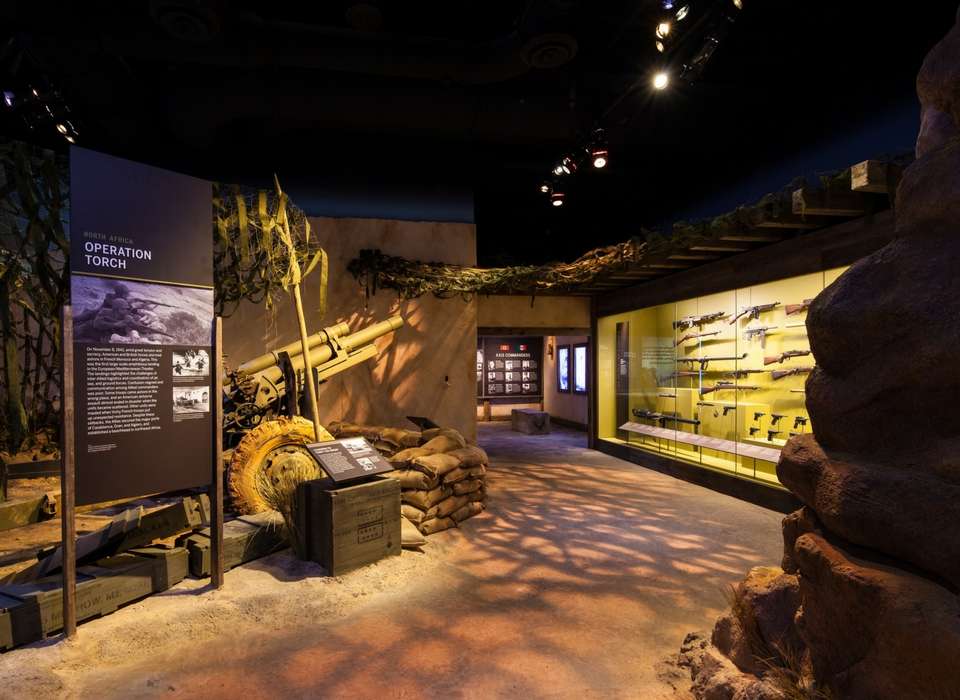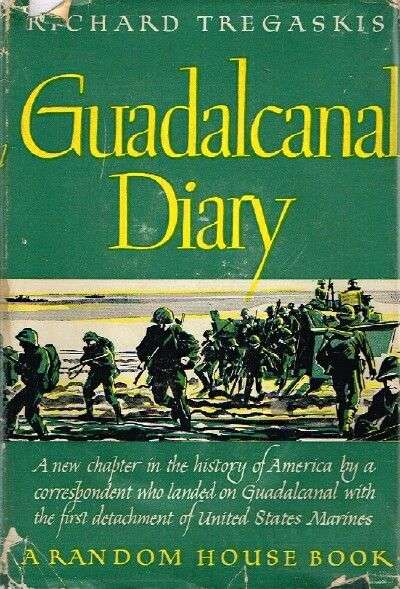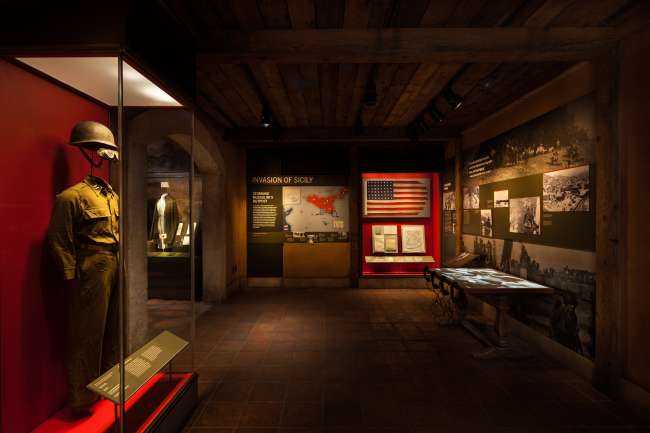Days after the Japanese attack at Pearl Harbor in December 1941, both Nazi Germany and Fascist Italy declared war, and the United States was confronted not only with a war on two fronts in Europe and Asia, but also hostilities and problems of grand strategy on a truly global scale. Savage fighting was taking place far away in the Soviet Union and China that could decisively affect our ability to win the war. But with our full industrial mobilization only beginning and those battlefields so remote, the United States could make little immediate impact on the global situation. In addition, our enemies held the initiative. For the first half of 1942, the Japanese swept from victory to victory across Southeast Asia and the Pacific. On the other side of the world, Britain survived, but had not inflicted a major military defeat on Nazi Germany. Likewise, although the Soviet Union survived to halt the Germans at the gates of Moscow in December 1941, a fierce and renewed German offensive was coming. There were fears that a nightmare scenario might arise if the Germans thrust through the Caucasus region into the Middle East while the Japanese knifed through India, allowing them to link up and control Eurasia from one end to the other.
It is against this historical backdrop that President Franklin Delano Roosevelt faced a decision: How could the United States most decisively deploy its limited military resources to influence the current balance of forces and the ultimate outcome of the war? The Soviets made clear that a cross-channel invasion of northern Europe, as soon as possible, was their expectation. This prescription for ultimate victory was also agreed upon by the top three American military planners: Henry Stimson, George Marshall, and Dwight Eisenhower. “If we’re to keep Russia in, save the Middle East, India, and Burma, we’ve got to begin slugging by air at West Europe, to be followed by a land attack as soon as possible,” Eisenhower contended. While in agreement with the American military leaders that a buildup of forces in England was essential to mounting a continental invasion, British military and political leaders were far more cautious and skeptical of the timing of an operation. The political consequences of a premature, failed military invasion would likely be fatal to the Allied cause.

American soldiers standing on a wing of a wrecked German plans in North Africa, 1943. Gift of Vincent Yannetti.
As the Allies debated their course of action, the heavy realities of war and defeat fell onto the scales. On June 21, 1942, General George Marshall delivered to Prime Minister Winston Churchill, literally beside President Roosevelt in the Oval Office, news of British defeat at Tobruk at the hands of General Erwin Rommel, who had vowed to continue to Suez. Roosevelt asked Churchill at that moment, “What can we do to help?”
Despite further Allied negotiations on what to do, the invasion of North Africa now gathered steam for Roosevelt as the first step in American military operations towards the defeat of Nazi Germany in Europe. In July, Roosevelt stated, “It is of the highest importance that US ground troops be brought into action against the enemy in 1942,” before finally declaring to his lieutenants on July 30 at the White House that his decision as Commander in Chief was final, and that the invasion of North Africa should go forward at the earliest opportunity. On August 13, Eisenhower was selected as commander of Operation Torch. “The President had made the most profound American strategic decision of the European war in direct contravention of his generals and admirals,” historian Rick Atkinson would later write, “and he had based his fiat on instinct and a political calculation that the time was ripe.”
From the global perspective, Roosevelt’s calculation that the time was ripe proved prescient. On August 7, 1942, American forces landed on Guadalcanal, the first landed steps on the long road to Tokyo. On August 23, German forces reached the banks of the Volga River, and the monumental battle at Stalingrad commenced. In late October, Rommel and his forces received their first taste of decisive defeat at the hands of the British at El Alamein. The Americans joined the fight in North Africa with the successful landings on November 8. In the brutal Naval Battle of Guadalcanal fought over November 12–15, the Americans succeeded in isolating the Japanese forces remaining on the island, while at virtually the same time on November 19 the Soviets under General Zhukov successfully surrounded over 250,000 German troops of the Sixth Army. The Germans at Stalingrad and the Japanese on Guadalcanal starved, until the German surrender and Japanese evacuation that both took place in the first week of February 1943. Winston Churchill would later title his account of these six months as the “Hinge of Fate” that changed the Allied fortunes, and eventually sent us in the direction of ultimate victory in World War II.
This article, by Senior Director of Research and History Keith Huxen, PhD, first appeared in the winter 2017 issue of V-Mail, the Museum’s quarterly Member newsletter.
Keith Huxen
Keith is the former Senior Director of Research and History in the Institute for the Study of War and Democracy at The National WWII Museum.
Cite this article:
MLA Citation:
APA Citation:
Chicago Style Citation:







![Max Fuchs, New York City cantor, sings as Rabbi Sydney [sic] Lefkowitz, Richmond, VA, conducts the first Jewish services from Germany.](/sites/default/files/styles/max_650x650/public/2025-10/image1.jpg)



